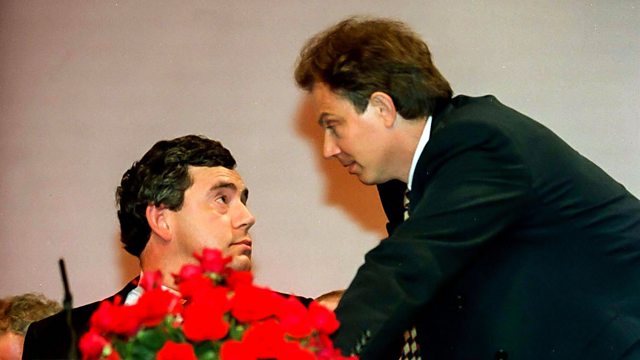Episode 3
A rocky midterm period highlights ideological differences within the New Labour leadership. After a second election win, the question of succession comes to the fore.
Millennium celebrations are tempered by a feeling across the country that New Labour haven’t yet delivered what they promised when they first came to power in 1997. Prime Minister Tony Blair decides to regroup and refocus. He turns his attention to public services, aiming to put choice at the heart of reform and stepping firmly outside of the Old Labour tradition.
As Tony Blair pushes for radical reform, Gordon Brown’s focus is on poverty and inequality with large increases in child benefits and NHS spending. But with No 10 and No 11 acting as two distinct centres of power, tensions between each of their camps – the Brownites and the Blairites – are rising. Blair’s vision of a New Labour for a 21st-century Britain seems to drift further from Brown’s more traditional Labour values.
Midway through its first term in power, New Labour faces a rocky period. A bumpy speech to the Women’s Institute, criticism over the Millennium Dome and a national fuel crisis test the popularity of the prime minister and cast shadows of doubt over his ability to achieve a second election victory. To make matters worse, Peter Mandelson is embroiled in yet another media frenzy. With Tony Blair’s first re-election looming, he and his team decide that Peter has to go.
Despite tensions and ideological differences between prime minister and chancellor, New Labour is re-elected by a landslide in 2001 – marking the first time Labour would ever serve a consecutive full term in its 100-year history. But as Blair and Brown move into their second term in power, the question of leadership and succession quickly starts to dominate.
Last on
Clips
-
![]()
Reshuffle
Duration: 02:32
-
![]()
Tensions take their toll
Duration: 01:37
-
![]()
Political differences emerge
Duration: 01:46
-
![]()
A vision for a new Britain
Duration: 02:24
Credits
| Role | Contributor |
|---|---|
| Executive Producer | Steve Condie |
| Director | Steve Condie |
Broadcasts
- Mon 18 Oct 2021 21:00
- Fri 22 Oct 2021 23:05�鶹������ҳ��� Two England & HD only
- Fri 5 Nov 2021 00:35





